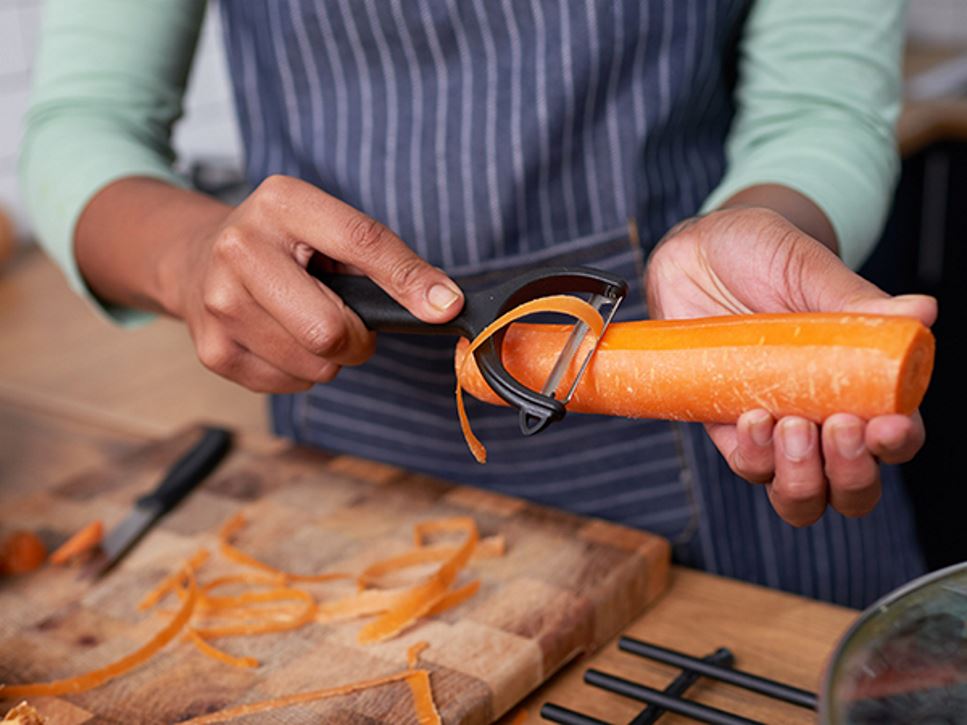As its name implies, a peeler removes the peel or skin from fruits and vegetables. Most often, peelers have a steel blade attached to a handle made of steel, metal, rubber or plastic.
Sword
A widely used design, sword-shaped or straight peelers have a swiveling double blade that extends straight from the handle, much like a sword. It works by running the blade along the fruit or vegetable and pushing away to remove the peel. This is the original design and is referred to as a “Yorkshire” or “Lancashire” peeler in the United Kingdom.
Most sword-shaped peelers have a pointed end for digging out blemishes from fruits or vegetables, and the blades often are made of stainless steel. Blades on sword-shaped peelers can be serrated, making it easier to remove tougher skins, such as on winter squash or citrus fruits. Handles come in many materials, such as metal, plastic or rubber.
Y-Shaped
This peeler has a “Y” shape with a horizontal swiveling blade in between the top end of the prongs. Unlike the sword-shaped design, this peeler works by pulling the tool toward you to remove the skin. Blades often are made of stainless steel, and handles are usually made of plastic. These peelers can be more comfortable to hold and keep the blade farther from your hands — a safety perk for the user.
Swivel
Swivel peelers have a half-moon design similar to the sword-shaped peeler but with a swiveling steel blade mounted on the “C”-shaped, or half-moon, part of the handle. This curved piece provides extra safety by covering the top of the blade. Handles often are made of plastic and come with a no-slip grip that makes it safer and more comfortable to use.
Julienne
Unlike most peelers, the julienne model is designed for cutting fruits and vegetables into thin, uniform strips, instead of just removing peels. Most julienne peelers function similarly to Y-shaped models: Pull the blade toward you to slice the fruit or vegetable. The julienne blade is lined with several small blades to mimic the style of cutting known as julienning. This peeler makes it quick and easy to cut fruits or vegetables in strips for salads, stir-fries or as a garnish.
Additional Uses
Peelers can remove the skin from produce, including eggplant, mango and butternut squash. They also can be used for shaving thin slices of chocolate, citrus peels or cheese to be used as a finishing touch or garnish. The pointed end of the sword-shaped peeler can remove stems from strawberries and de-seed small peppers such as jalapeños or chili peppers.
Safety and Care
To prevent a peeler from slipping and decrease your risk of injury, make sure your hands are clean and dry, and use smooth, fluid motions when peeling. While most peelers are dishwasher-safe, washing and drying by hand reduces rusting and dulling of the blades.
This article originally appeared in Food & Nutrition Magazine®, published by the Academy of Nutrition and Dietetics.
Find a Nutrition Expert
Looking for credible nutrition information and recommendations? The Academy of Nutrition and Dietetics' network of credentialed food and nutrition practitioners are ready to help!

